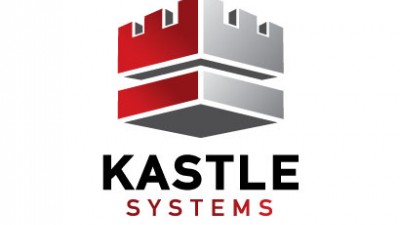How Existing Technology Can Support A Safe Return To Work

Building safety is about to get a lot more complex. As Americans return to the office, keeping employees safe won’t be solved by handing out keycards: It will involve keeping countless surfaces sanitized and carefully monitoring the number of people in every space in the building.
But landlords shouldn’t feel too overwhelmed. Though they may not know it, many landlords already have the building blocks they need to protect tenants as buildings reopen.
“It’s not so much about reinventing security systems as it is about enhancing and reframing them, integrating technology and new protocols to create a more secure environment,” said Todd Burner, chief product officer at Kastle Systems, a building security operator based in Washington, D.C.
Kastle has recently launched KastleSafeSpaces, a building-wide plan to safeguard the health of office workers. Though the system can leverage new hardware like thermal scanners, it largely relies on existing access control devices and smartphones, making it convenient to implement across commercial properties, Burner said.
Because their technology is already installed in 3,600 buildings and 41,000 businesses across 47 states, the members of the Kastle team are hoping KastleSafeSpaces will promote a universal standard of coronavirus preparedness for the built environment.
“It can't be every building owner, tenant and occupant for themselves,” Kastle Systems Chairman Mark Ein said. “We are all in the business of public health now to protect each other’s lives and help America get back to work.”
The KastleSafeSpaces initiative outlines four major transformations to keep office workers safe:
1. Touchless Everything
To make sure that building occupants keep their hands as clean as possible, touchless controls will become standard throughout buildings. For years, Kastle customers nationwide have used their KastlePresence mobile app to swipe in, hands-free, past turnstiles in their buildings. Now, Burner said, Kastle will extend that same technology to enable wireless, touchless door opening, elevators, security card readers, visitor kiosks and parking ticket vending machines.
2. Screen In, Screen Out
The heart of building security will be the ability to test and identify occupants and visitors who are safe to enter and screen out those who are not. Ein said that building lobbies will start to resemble airports, with testing stations, screening queues, speed lanes, designated check-in times and self-check kiosks. All these tests will integrate with existing access control systems to give credentials to those who are virus-free and deny them to individuals presenting with symptoms or known to be infected.
Exactly what kind of testing is appropriate will depend on the sort of space and evolving medical guidance, Burner said. While a building might begin with app-enabled questionnaires, it might soon add temperature checks, wide-range thermal imaging or even direct viral or antibody testing once it becomes available.
3. Contact Tracing
Public health officials agree that one of the best ways to combat the spread of the coronavirus is through contact tracing, tracking who came into contact with people who later learn they were infected. Using access control systems for buildings, floors, office suites and common areas, Kastle can monitor traffic and determine which building occupants were in close contact with one another. By adding on intelligent video, Burner said, the process can be refined even further.
“If someone subsequently tests positive for COVID-19, people who had been in the same spaces as the infected employee can easily and quickly be informed through the Kastle app,” Ein said.
4. Social Distancing
New signage and floor markings can only do so much, so KastleSafeSpaces will use data and technology to supplement physical reminders to reinforce social distancing. Building owners can alert occupants of staggered arrival times to keep lobbies clear of crowds and enforce visitor restrictions. Using Kastle data, owners will also be able to see real-time occupancy density, and warn tenants if crowds are gathering. These digital capabilities will complement physical changes like checkpoints and safety stations outside of elevators, office suites and other common areas.
"As much thought needs to go into planning for how people get back to work in offices as to when they should start doing so,” Kastle CEO Haniel Lynn said. “A comprehensive, tech-smart approach to security, safety and public health can provide the right on-ramp for businesses and the economy to take off.”
This feature was produced in collaboration between the Bisnow Branded Content Studio and Kastle Systems. Bisnow news staff was not involved in the production of this content.

